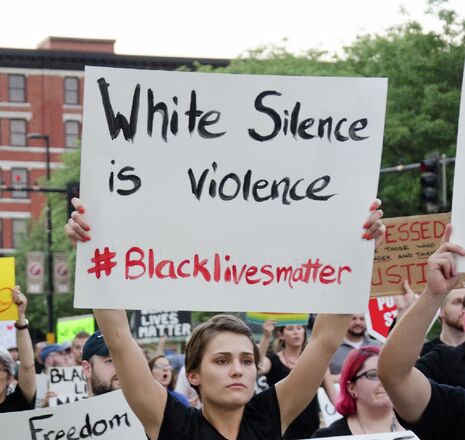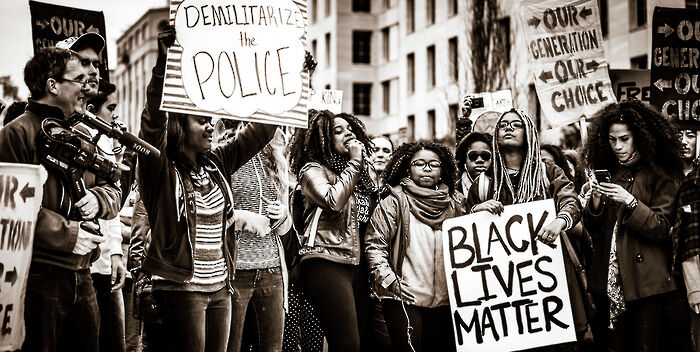Can Varsity be an accomplice?
Our columnist in residence, Waithera Sebatindira, problematises the so-called neutrality of the student press, and reminds us that indifference in the face of social injustice is not an act of allyship

One of my favourite things about student press is the platform it gives to marginalised students. I’ve learned a lot about experiences different to my own from Varsity columns and have had formless feelings crystallised by opinion articles. To this end, the paper facilitates the dissemination of important ideas and is a very useful tool for students of colour.
However, I hesitate to frame its usefulness in the language of effective allyship. Ultimately its purpose is to generate clicks and create opportunities for aspiring journalists. Within the context of a white supremacist society, this leaves Varsity in a position where it can become complicit in the oppressions that affect students of colour.
“What does neutrality mean in the face of oppression?”
Let’s first take the example of Jason Okundaye, CUSU BME President. When his tweets on racism were picked up by Katie Hopkins, he was thrusted into the national spotlight and subjected to wide-ranging racist responses. Varsity reported on the story objectively. One might think there’s no prima facie issue here. After all, Varsity wasn’t set up to defend marginalised people, and its journalists are entitled to report on interesting news that involves Cambridge students.
But this left a bad taste in my mouth, because months before, Jason had been contributing a weekly column to the paper on queer black masculinity. The paper had materially benefitted from Jason’s anti-racist activism, but when this activism led to death threats, all Varsity could muster was a “neutral” account of the situation, which wrongly implies that neutrality in the face of white supremacy isn’t a political position in itself.
This leads to my next example, whereby the close attention that the national press pays to Varsity’s articles was made abundantly clear in the case of Lola Olufemi, our CUSU Women’s Officer. The Telegraph picked up, and distorted, a story about her decolonial work within the English faculty, and she was consequently subjected to misogynoistic vitriol from across the country.
Varsity’s actions following this maelstrom evince at best indifference towards Lola’s welfare, and at worst a deeply troubling cynicism concerning the publication’s exploitation of her national profile. Soon after the Telegraph article, Lola spoke at a decolonising the English faculty meeting, where confidentiality was explicitly guaranteed. Regardless, Varsity attempted to publish and name Lola’s statements, despite this clearly putting Lola in real danger. In the end, her comments were not printed. Varsity also published an irrelevant story in which Lola was wrongly accused of “blocking free speech”. In using her name as opposed to her CUSU title (which is common practice) in a headline which included a common trope about student activists, they risked exposing her to sexist and racist abuse for the sake of the hits that her name recognition would bring.
A final, more recent, example concerns Faria, who the paper commissioned to illustrate a piece on the subject of split identity. This commission came after her work – which explicitly challenges white supremacy – was noticed by Varsity at a BME art exhibition. Faria’s piece featured a woman looking into a mirror and contained the statement “white silence = violence”. Upon submission she was contacted and questioned specifically about the meaning of the statement (as opposed to the illustration as a whole), and when that week’s Varsity edition went to print, her illustration was not included. Neither an explanation nor an apology was given, even though Varsity had initially reached out to Faria. It seems likely that this illustration was discarded for fear that it would make (white) readers uncomfortable.
Nothing in these examples sets Varsity apart from other similar student publications, but we clearly need to reimagine the role of these papers. What does neutrality mean in the face of oppression? How should people of colour engage with a paper that seeks to profit from their experiences, until the relationship stops being mutually beneficial? These are the sorts of questions that tomorrow’s journalists need to consider if they ever hope to apply the label of “accomplice” to themselves.
 News / Cambridge study finds students learn better with notes than AI13 December 2025
News / Cambridge study finds students learn better with notes than AI13 December 2025 News / Cambridge Vet School gets lifeline year to stay accredited28 November 2025
News / Cambridge Vet School gets lifeline year to stay accredited28 November 2025 Science / Did your ex trip on King’s Parade? The science behind the ‘ick’12 December 2025
Science / Did your ex trip on King’s Parade? The science behind the ‘ick’12 December 2025 News / Uni Scout and Guide Club affirms trans inclusion 12 December 2025
News / Uni Scout and Guide Club affirms trans inclusion 12 December 2025 Arts / Modern Modernist Centenary: T. S. Eliot13 December 2025
Arts / Modern Modernist Centenary: T. S. Eliot13 December 2025









